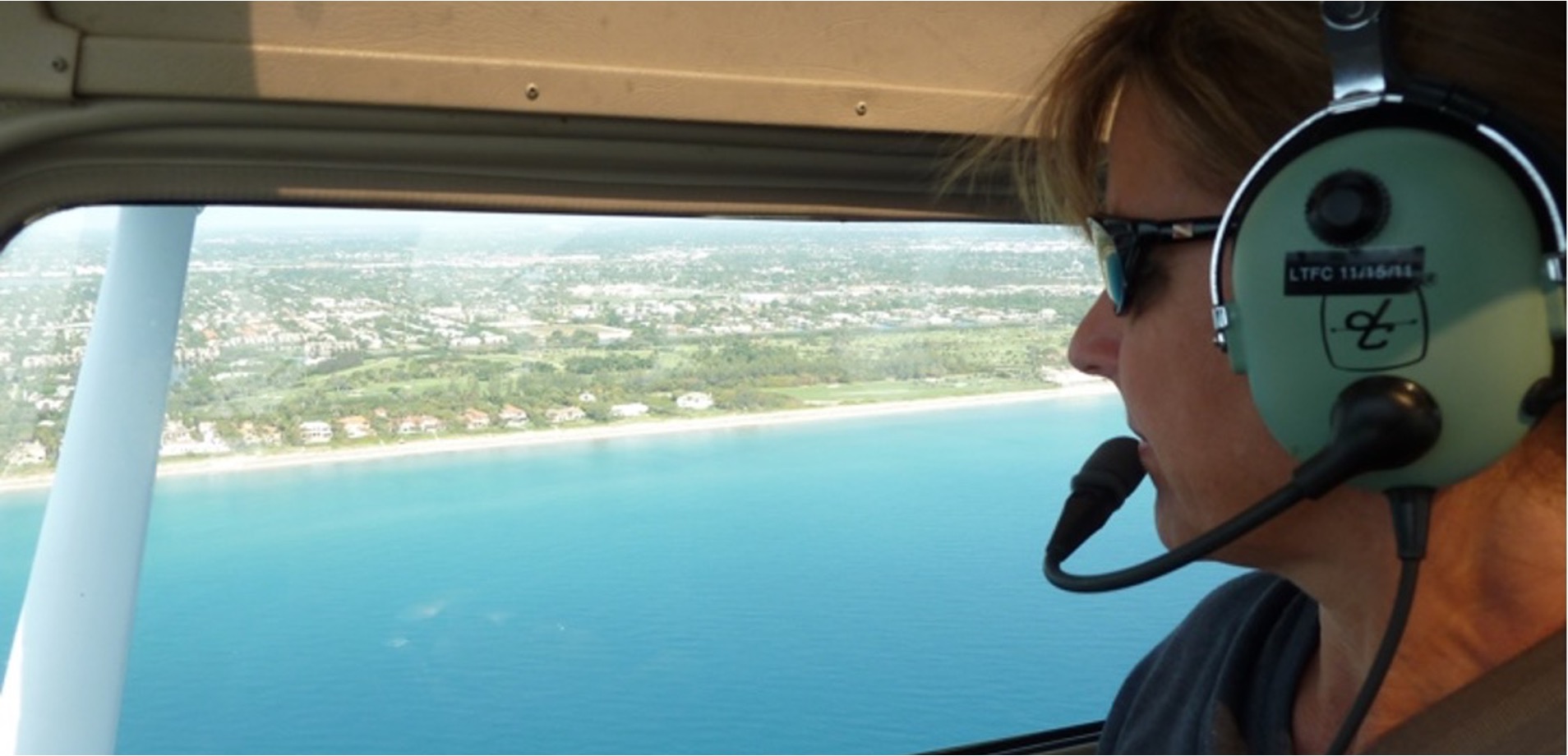
Author: Colleen Hecker
Date: June 17, 2024
Florida Atlantic University’s Boca Raton campus is a bit quieter in the summer months, but the same cannot be said for the happenings at the Marine Lab. While the summer semester means many FAU students scatter far and wide for well-deserved vacations or summer jobs, it is also when many of the organisms we study are in our local waters or nesting on our beaches. Sea turtle nesting and hatching season is now in full swing here in south Florida. Similarly, we have reached the peak octopus season. With warm weather, fewer classes, and plenty of animals and plants to study, the fieldwork season for FAU Marine Lab researchers is well underway!
Oftentimes, when a scientist says they are conducting “fieldwork,” that description alone can be vague and hard to visualize. At our marine lab fieldwork takes many forms, occurs in a variety of environments, and largely depends on the study animal or plant in question. Let’s take a closer look at the variety of fieldwork going on outside the walls of the FAU Marine Lab, broken down by study organism below.
FAU Marine Lab Director, Dr. Jeanette Wyneken, and her students study both hatchling and slightly older juvenile sea turtles. Current sea turtle projects are diverse, ranging from investigating the sex ratios of hatchlings produced in southeast Florida, to the biomechanics of how turtles swim and identifying the various microbes living on turtle skin. To answer questions about newly hatched turtles, we must collect them shortly after they emerge from the nest. That’s accomplished by placing a wire cage over the nest during the day, since the turtles typically emerge at night. (Check out some of our awesome collaborators that help make that happen!)
Emergence at night is advantageous for hatchling as by doing so, they avoid being detected by predators that find their prey visually during the day. But how does a hatchling inside the nest know that it’s nighttime? Emergence behavior is triggered by the drop in sand temperature over the nest that occurs naturally after sunset. To capture the hatchlings soon after an emergence, the cages are monitored twice each evening: shortly after dusk and again, at midnight. This ensures that the turtles will be confined within the cage for only short time periods. If hatchlings are found, all of them are collected and brought to the Marine Lab. A small subsample of 5 - 10 turtles are checked in to call the Marine Lab home for a few short months. If hatchlings are not found after the midnight inspection, a corner of the cage is opened and left on the nest to be monitored again the next night. Opening the cage ensures that if an emergence occurs later at night or during the day, the turtles can crawl to the ocean and will not be fatally exposed to hot sand while the beach is exposed to sunlight. These late nights of fieldwork are the integral first step required to initiate several of our ongoing research projects.
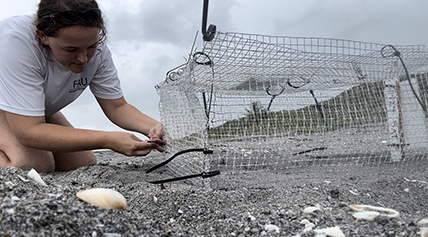
|
| Genevieve Sylvester, a Glenn W. & Cornelia T. Bailey Marine SEA Scholar alumnae, closes a turtle cage at dusk, ensuring that hatchlings can emerge safely into the caged area to await collection. The zip ties allow the cage corners to be closed off. The corners are then covered with sand to protect the turtles from sharp edges. |
FAU Marine Lab Postdoctoral Fellow, Dr. Chelsea Bennice, along with the students under her supervision, investigate a number of octo-topics spanning aspects of the ecology, behavior, and even the bacterial flora on the skin of these animals! Such a variety of topics means that the field studies underway each summer may differ from one year to the next. To study octopuses, our lab’s scientific divers take to the shallow waters of Phil Foster Park’s Blue Heron Bridge, a popular dive site nestled in the Lake Worth Lagoon in Riviera Beach, Florida. Then, depending on the octo-topic in question, divers engage in a varied number of data collection strategies.
To study behavior, our divers use a 24-hour waterproof camera called the Octopus Monitoring Gadget (or OMG!) pictured below that will record continuous video. Once an octopus’ den is located, divers secure the camera so it faces the den. The next day, the camera is retrieved, and its footage reviewed. The OMG allows us to learn when the octopuses are active, what they do during those active periods, how they use their dens, and what sorts of prey they bring home. Potential predators such as diving marine birds have even been recorded by the OMG.
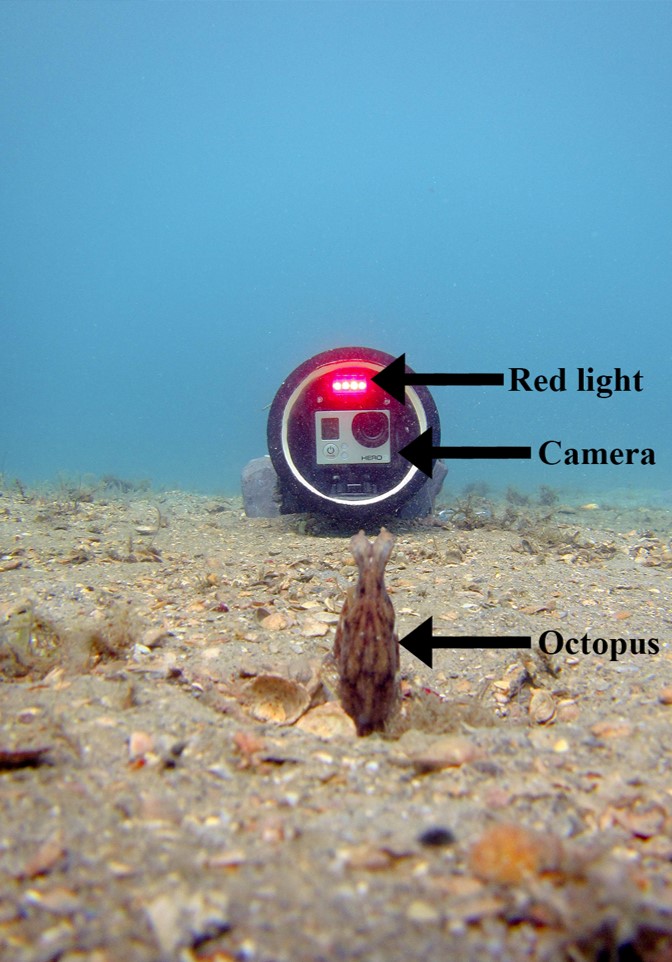
|
| An Atlantic longarm octopus stares down the Octopus Monitoring Gadget (OMG). The OMG is a camera equipped with a red LED light for night footage (octopuses are insensitive to the red wavelengths), both hooked up to a power source and all enclosed in a waterproof housing. This enables a 24-hour recording of octopus activity. Photo by Chelsea Bennice, Ph.D. |
To study the skin-dwelling bacteria on octopus skin, divers use a floating laboratory cleverly crafted from a modified boogie board and recycled take-out containers to hold sampling equipment. When an octopus is located, it is coaxed into a bin that can be brought to the floating lab at the water’s surface. The octopus will then have its skin gently swabbed to collect bacteria. It is then released back on the sandy bottom of the lagoon. The swabs are returned to the (land-based) lab for further study.
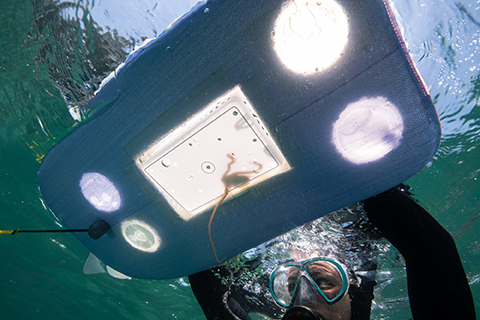
|
| FAU Marine Lab Postdoctoral Fellow, Dr. Chelsea Bennice, gently places an Atlantic longarm octopus in the floating laboratory to be swabbed and released. Photo by Jennifer Adler. |
Dr. Stephen Kajiura, a principal investigator at the Marine Lab, and the students he mentors are busy this summer testing the efficacy of shark deterrents and surveying whitespotted eagle ray populations. These projects involve field observation from sites both underwater and above in the skies, flying in an airplane just above clear shallow water near the shoreline.
Shark deterrents are used to prevent sharks from eating an angler’s catch before it is reeled in. Because sharks are sensitive to magnetic fields, the deterrent being tested is a small, magnetic cylinder (pictured below) that can be used as a sinker on a fishing line. To test the effectiveness of these magnetic cylinders as repellents, cameras are deployed underwater near mesh bags of bait, some of which (the experimental bags) contain the cylinders while other bags (the controls) do not. Reviewing the camera footage will reveal whether sharks are repelled by the experimental bait bags.
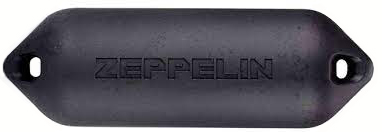
|
| A small, magnetic cylinder deterrent to be used as a sinker on a fishing line is being tested as a shark repellent. |
While cameras are deployed underwater, Dr. Kajiura and his students also take to the skies to complete aerial surveys, designed to determine the abundance of whitespotted eagle rays in the Florida Keys. By flying a plane over the water, Dr. Kajiura and his students get a bird’s-eye view of the eagle rays flying through the open water (not blending into the sand or buried like many stingrays). This aerial view allows the rays to be counted, measuring their abundance and population density.
Dr. Marguerite Koch, a principal investigator, leads the FAU Marine Lab seagrass studies. She and her students are interested in seagrasses’ porous tissues, called aerenchyma (aer-en-chyma), that allow oxygen to travel within the plant. Aerenchyma tissues are like a gas highway, permitting seagrasses to receive adequate oxygen throughout the plant. To collect these plants, sediment corers are inserted into the sand around the seagrass. The plant is nestled in the corer, which is then lifted from the sand, allowing for the entire plant to be sampled without causing damage. The seagrasses can then be transported to the lab for future study.
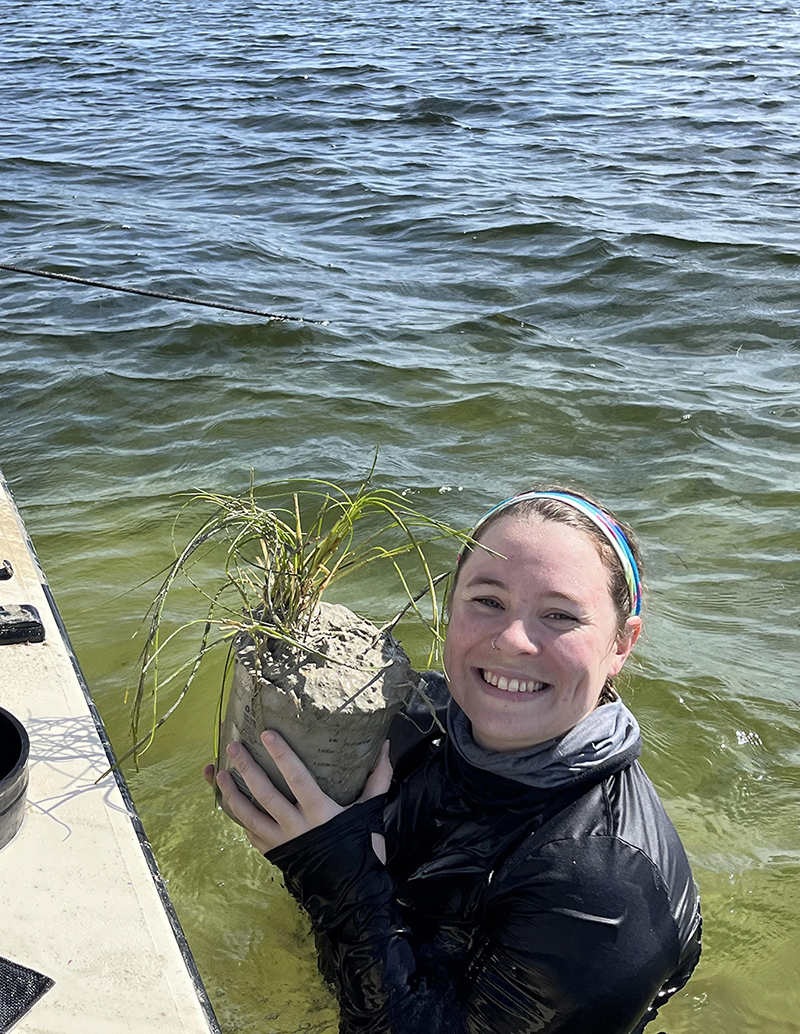
|
| Alex Hoey, a Glenn W. and Cornelia T. Bailey Marine SEA Scholar alumnae, holds a sampled seagrass core. |
In addition to aerenchyma tissues, Dr. Koch and her students also study the effects of stressors, such as algal blooms, on seagrass physiology. This summer, they will lay transect lines on the bottom in Florida Bay. Transects consist of a straight object (such as a rope or tape measure) spanning across the environment of interest. Transects are useful in fieldwork as they allow for random samples to be taken in increments along the straight line. In these studies, seagrasses sampled within the transect line will be used to determine how algal blooms affect the abundance and physiology of the seagrasses within the transect boundary.
Clearly, while summer may bring a pause to some of campus life, science never stops! As busy as we are this summer at the FAU Marine Lab, we are fortunate every day to ask and answer questions about the marine environment. When fieldwork dwindles later in the year, we will use our “free” time to analyze our data and gain new insights into the fascinating animal and plant species we study, and of course, to document our discoveries by publishing articles that describe what we have learned.